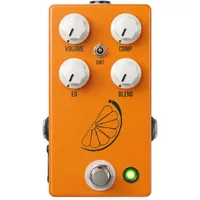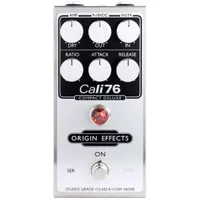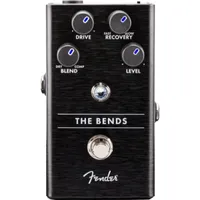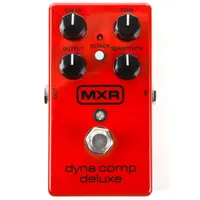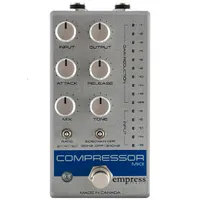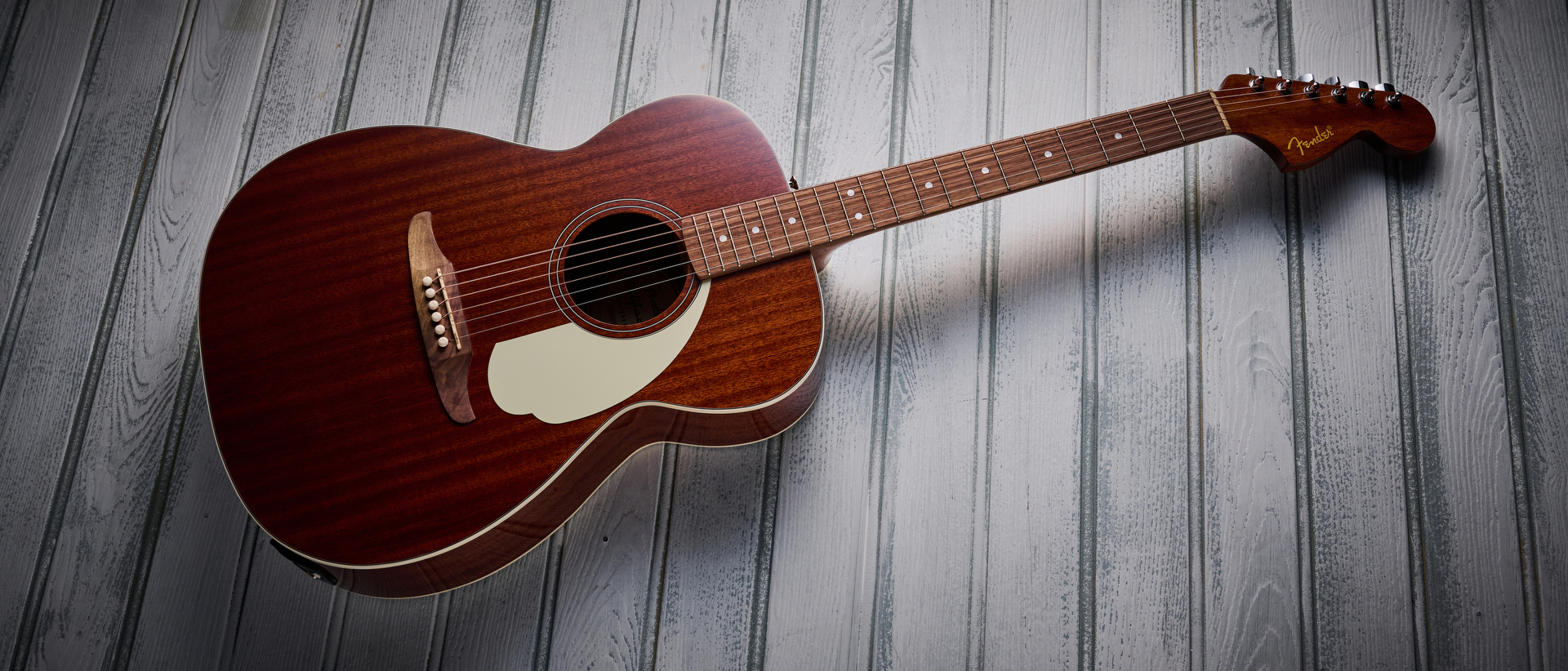Best compressor pedals 2025: control your tone with the must-have utility pedal
My pick of the best guitar compressor pedals will enhance your tone with options from Boss, Keeley, MXR, and more
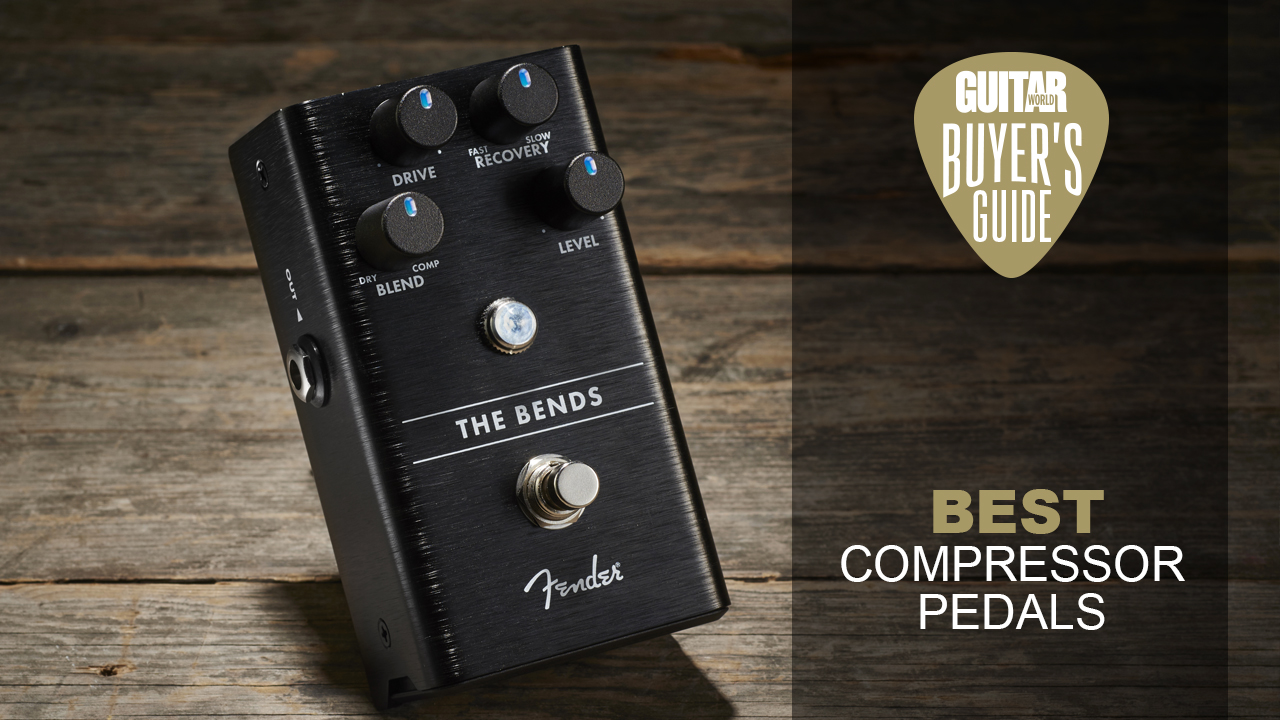
Once you’ve had one of the best compressor pedals on your pedalboard, you’ll find it hard to play without one. The right compressor for your playstyle can have a massive effect on your overall tone, helping enhance sustain, ‘glue’ your overall sound together, and seriously enhance your overdriven tones.
There are various types of compressor pedals, and as one of the most commonly used effects in the studio, it makes total sense to have one on your pedalboard for live playing. Some players like a transparent, ‘always-on’ compressor to use a tone sweetener, whereas others like a compressor that really slams their sound, giving you a tight and punchy tone. Compressors can also massively enhance the sustain of your chords and notes, and of course, they balance the dynamics of your playing, giving you a more consistent performance.
I go into more detail about compressor types in the dedicated section below, but the most popular types are optical, VCA, FET, and OTA. An optical compressor works via a light source and photoresistor, resulting in a smooth and ‘musical’ sound. VCA compressors are voltage-controlled, which offers a more aggressive type of compression, great if you want to play funkier guitar styles. FET compressors also make things sound punchy and are great for adding grit and character to your tone. OTA compressors offer a more vintage character and can get very ‘squishy’ at high settings.
With such a variety of impact on your tone, it’s no wonder choosing a compressor pedal can be a tough call. Compressors can also be difficult to work with controls that are more familiar to studio engineers than the average guitarist. To that end, I’ve made things relatively simple here by sorting my top picks into categories for you. If you want a great all-rounder that’s good value for money, check out the Keeley Compressor Plus. If that’s a bit too pricey for you, then have a look at the TC Electronic HyperGravity Multiband, which is available for just north of $100.
To help you research before you purchase, I’ve included a bunch of additional sections in this guide that will give you more info. My how to choose section helps outline exactly what sort of effect each type of compressor will give your tone in more detail, I’ve included an FAQs section that features loads of common questions answered by the experts here at Guitar World, and I’ve also included a glossary of key terms to help you get your head around the more studio-orientated lexicon used when describing compressors.
My top picks
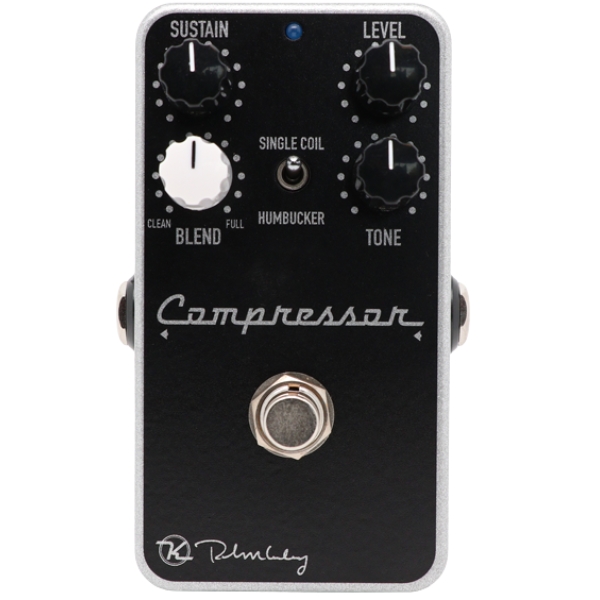
As well as being great value for money, the Keeley Compressor Plus is quite simply one of the most complete compressor pedals out there, and an industry standard for guitarists.
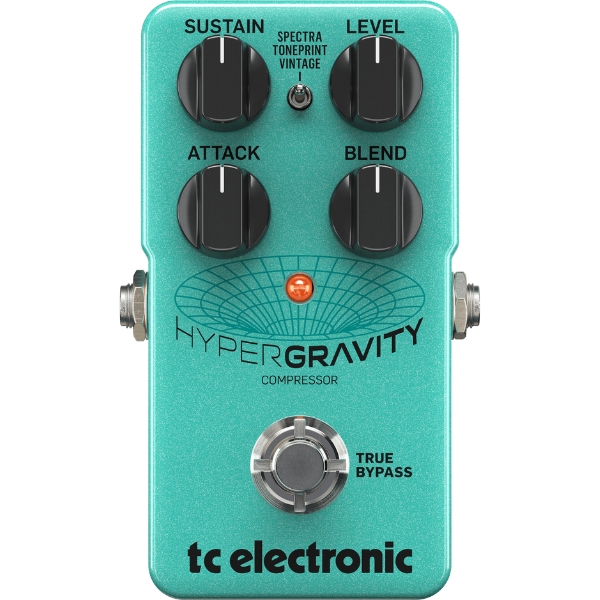
If you want a compressor that doesn't cost the earth, the TC Electronic HyperGravity is excellent value for money and gives you plenty of functionality to go along with it.
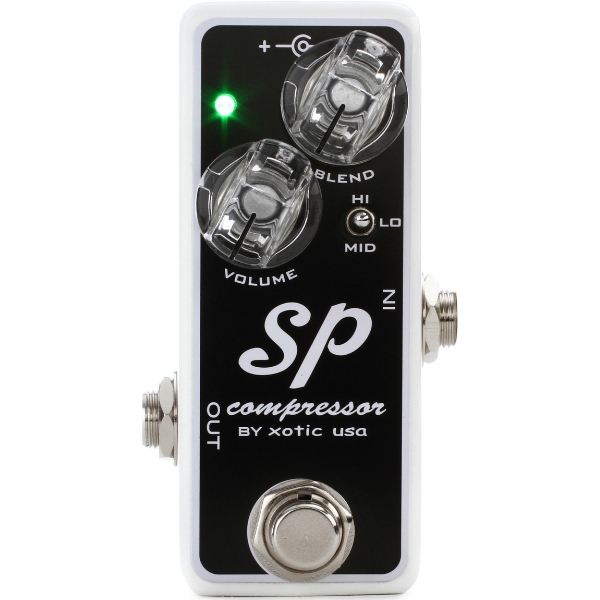
If you’re looking for a compressor that doesn’t take up much space, the Xotic SP is my top choice. It’s got a surprising amount of control considering the tiny form factor, it’s low on noise, and it features an option to boost alongside its compression functionality.
Best overall
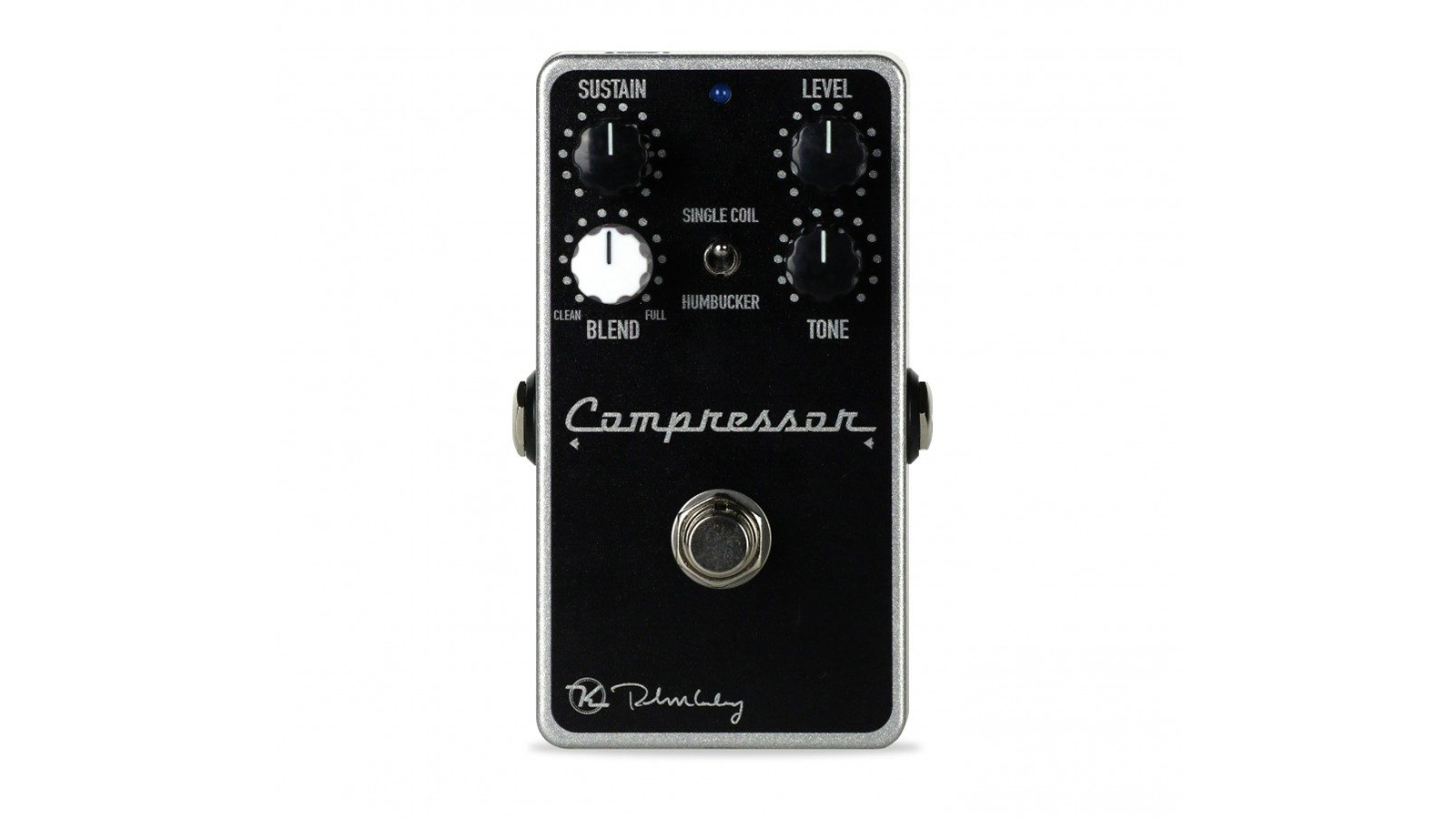
1. Keeley Compressor Plus
Our expert review:
Specifications
Reasons to buy
Reasons to avoid
Robert Keeley’s most popular stompbox has been updated to make it all the more tweakable. Mercifully, it’s still intuitively laid out. There’s now a release switch to set the appropriate attack for humbucker and single-coil pickups.
A blend control dials in how much of the compressed signal you want – fully counter-clockwise you’ve got a half-and-half blend, and turned fully clockwise it is all squashed quack.
It puts you in control of the peaks in your guitar playing. A tone control lets you compensate for the high-end and harmonic response you sometimes lose with compression. Tone-wise, the Compressor Plus is exceptional, and it’s insanely good value for money, making it our top pick for best compressor pedal.
Best budget
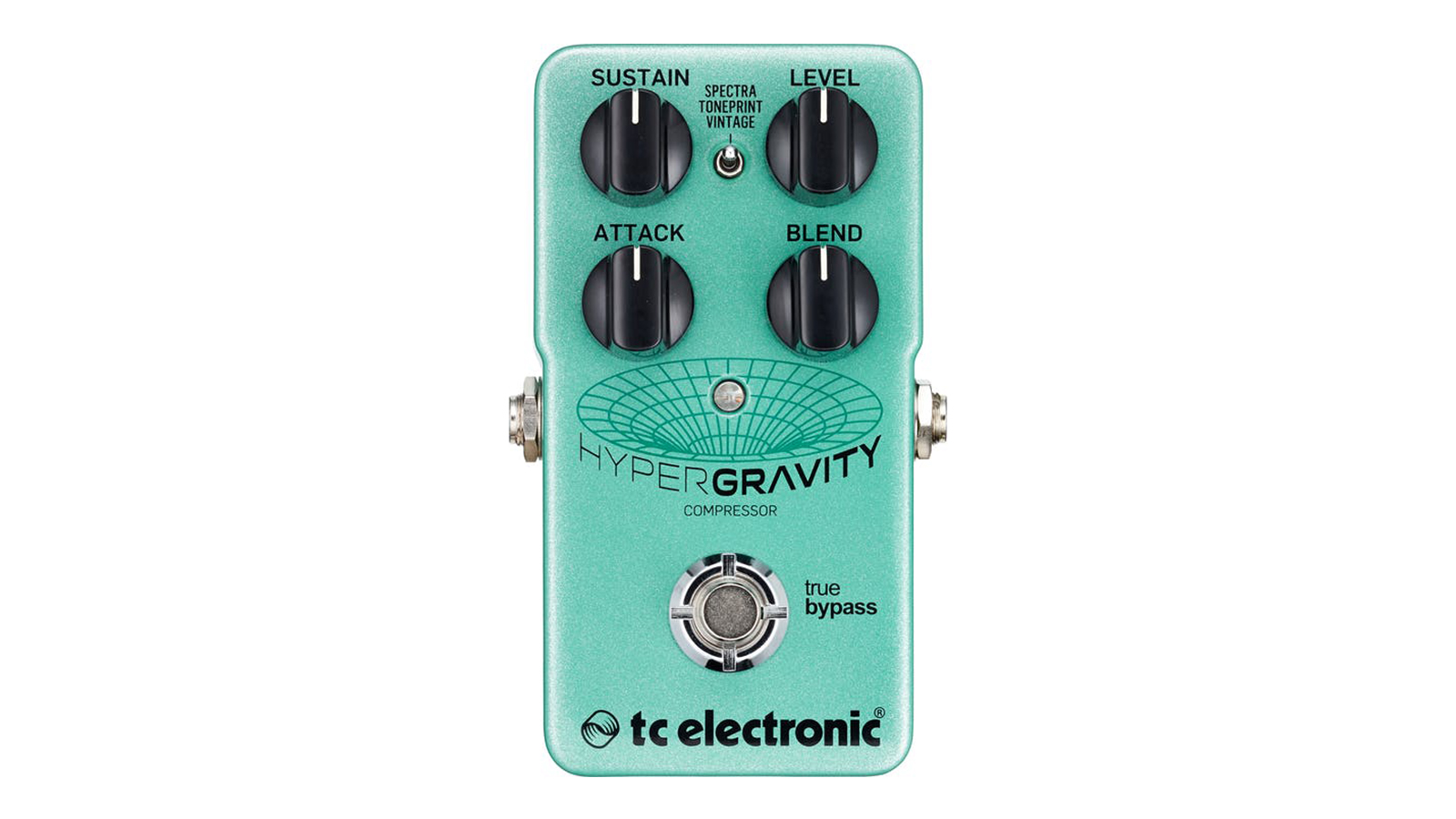
2. TC Electronic HyperGravity Multiband
Our expert review:
Specifications
Reasons to buy
Reasons to avoid
The HyperGravity Multiband features a three-way switch that lets you select three different modes of compression. You can have a super-transparent Spectra compression, a more squishy Vintage compression to go with your Brad Paisley tab book, or you can upload one from TC Electronic’s extensive TonePrint library. You can also do this wirelessly via your phone.
This unlocks the ability to do multi-band compression, which is really incredible considering the price point. Multi-band compression allows you to just tame the highs or lows in your signal, giving excellent flexiblity in tone shaping.
Elsewhere, this is just an excellent compressor, operating at the nexus between digital and analogue. You can switch between true- or buffered bypass, there is a familiar menu of controls for dialing in your compression and it is built tough.
Best mini compressor
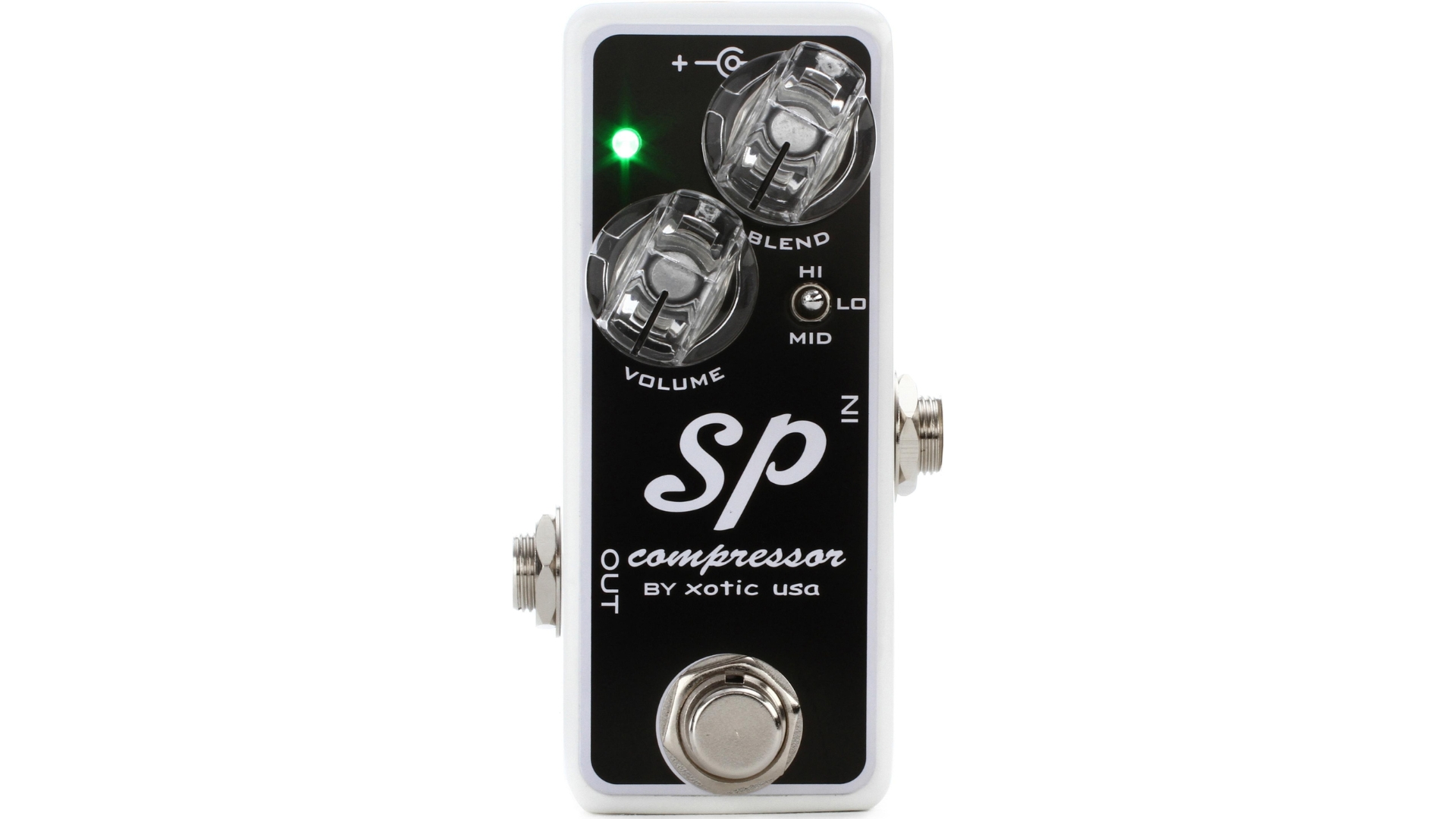
3. Xotic SP
Our expert review:
Specifications
Reasons to buy
Reasons to avoid
Let's be honest, compressor pedals are utility pedals that aren’t there to take the limelight, so it makes sense to get one that takes up as little room as possible. Despite its small size, though, the Xotic SP manages to pack a lot of functionality into its teeny tiny chassis.
This is an OTA-type compressor based on the famous - and recently revived - Ross compressor beloved for its squashy sound. The volume control offers a +15dB boost when turned fully to the right, so the Xotic SP can double as a boost pedal with the right settings. The hi, mid, and lo switch enables varying amounts of compression, and helpfully, a blend knob allows you to mix your dry and compressed signal together for a more natural sound.
There are also internal dip switches for additional control, one of which allows you to change the attack/release options, making the compression more or less snappy. There’s also an input pad for working with higher-output humbuckers, and a low-pass filter for removing compression from the low end of your signal. It’s an excellent array of control for such a small pedal, making it well worth adding to your ‘board if you want compression without sacrificing pedal real estate.
Best optical
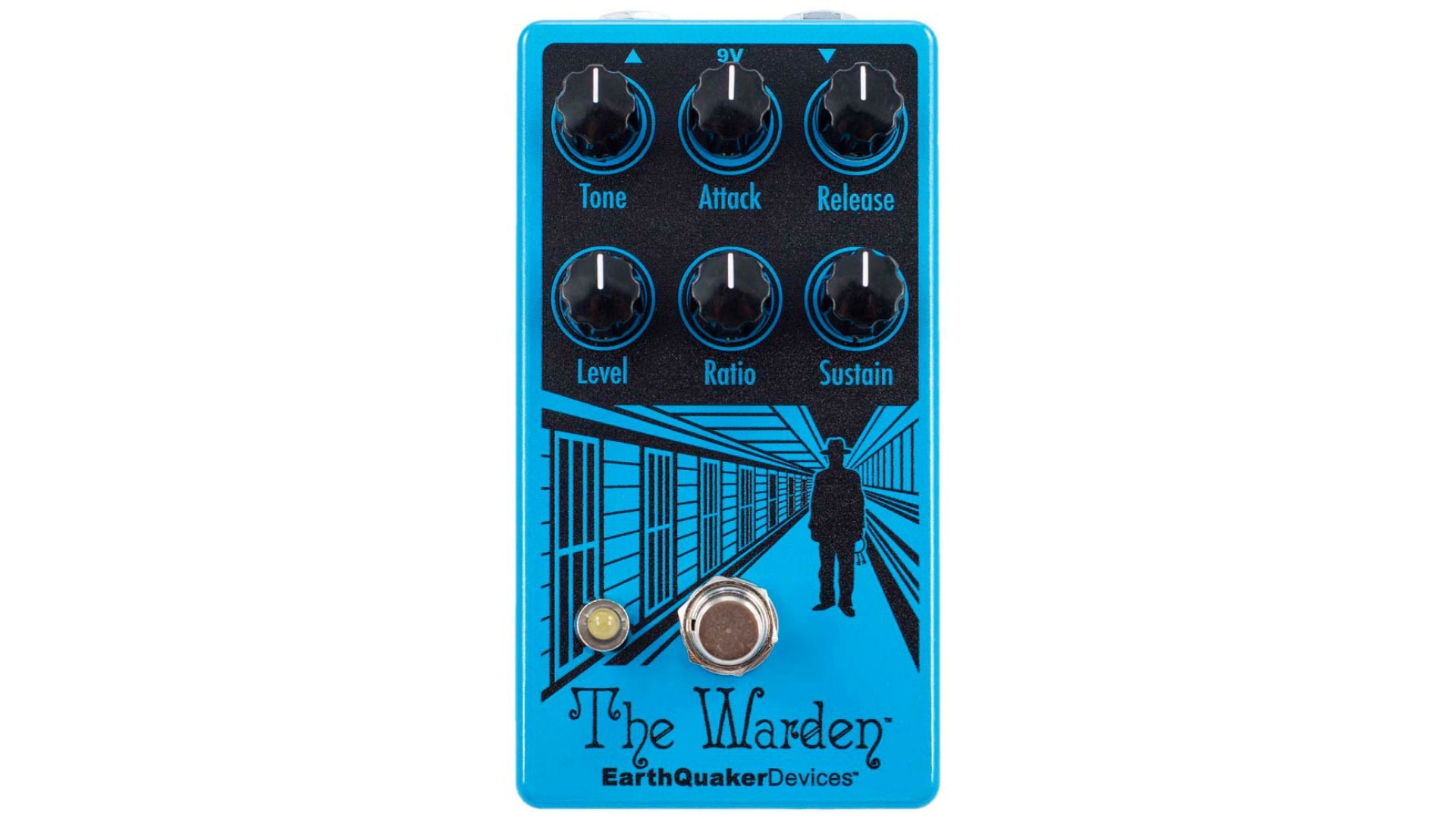
4. Earthquaker Devices The Warden
Specifications
Optical compressors are great for adding smooth, natural-sounding compression to your guitar tones, which is why they’re so commonly used in studios. The Earthquaker Devices The Warden lets you add this optical style compression to your pedalboard, fattening up your tone while still retaining its natural characteristics.
Internally, The Warden bumps the power in from 9V to 18V, which results in lots of headroom to play with. It can give you a natural-sounding compression to use as a nice tone sweetener, or you can squash the hell out of your sound and completely reduce the dynamics. There’s no blend control though, so if you’re fan of mixing compressed and uncompressed tones, then you might want to look elsewhere in this guide.
That said, the lack of a blend control doesn’t stop you from getting great-sounding compression, and the pedal can induce a bit of noise at extreme settings, but this is typical of most compressors. The variety of knobs available on this pedal makes it feel more like a studio compressor unit, which means plenty of flexibility, but there are players out there who might prefer something a bit simpler.
Best always-on
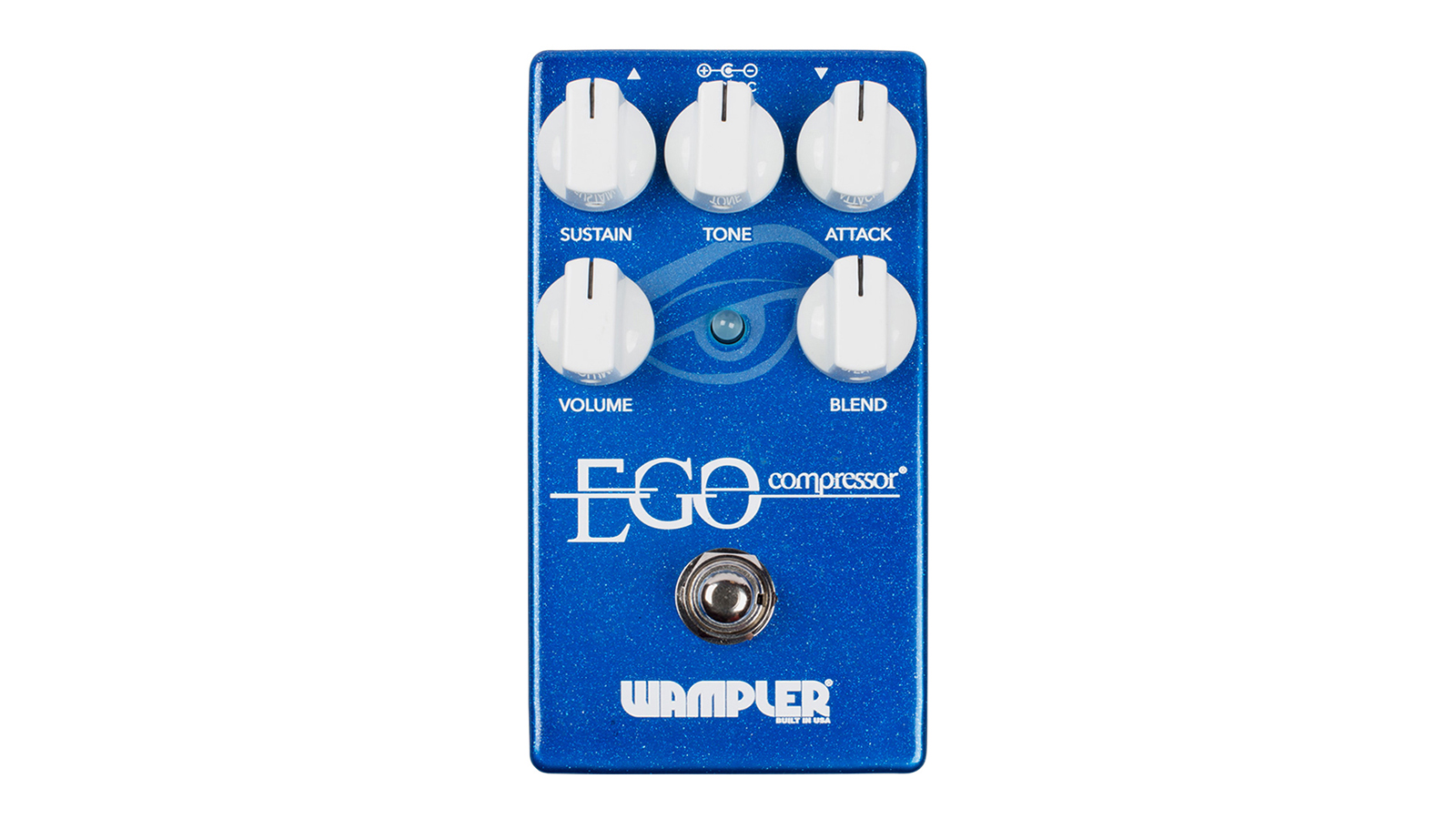
5. Wampler Ego Compressor Pedal
Our expert review:
Specifications
Reasons to buy
Reasons to avoid
The Ego Compressor belongs to that select band of compression units you can set and leave always on as a tonal sweetener and one-pedal support group for your playing. The layout gives you complete control over your compression, with the all-important blend control on hand to dial in the level of squash you need.
Brian Wampler says the Ego was designed to compress and do all the things compressor pedals do, but also to keep your tone uncolored, transparent and ultimately dynamic. Five knobs may seem like overkill, but once you’ve set the Ego you can forget about it, and you might never switch it off.
Best multi-band
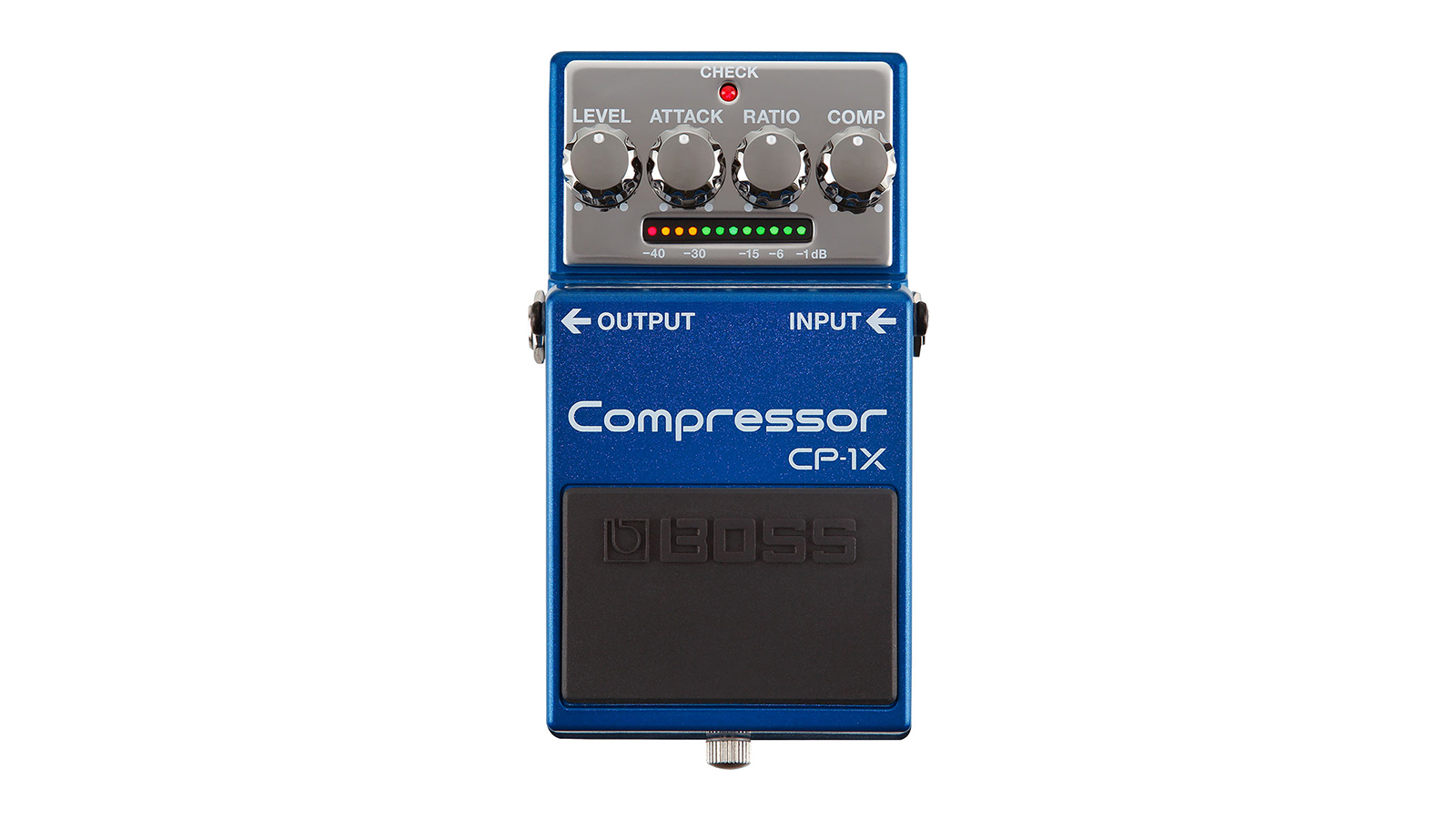
6 Boss CP-1X Compressor
Our expert review:
Specifications
Reasons to buy
Reasons to avoid
Boss has always made excellent compressors, but the CP-1X takes their stompbox squash further with the use of Multi-Dimensional Processing (MDP) to preserve your fundamental tone. It only compresses overtones so that your signal remains as transparent as possible.
The control panel, meanwhile, is typically well laid out, with controls for compression, ratio and attack enabling you to dial in exactly what you want from the unit, and a level knob for controlling your output.
There’s even a Knight Rider-esque gain-reduction indicator to let you know how much compression you’re running at any given time. It is also low noise, and runs on 9V that internally converted to 18V, giving it plenty of headroom.
Also consider
For most players, the above compressors should have most of the bases covered. That said, compression comes in a lot of different flavors, so here are some more great options for you to choose from.
JHS Pulp 'n' Peel Compressor v4
4-controls | Switchable bypass | 9V
The fourth generation of Josh Scott’s Pulp ’n’ Peel compressor welcomes a dirt switch to the enclosure that toggles on and off a parallel overdrive circuit. This introduces a little overdrive to proceedings, with a trim pot on the side of the pedal that lets you control how much gain. That’s a nice option to have.
★★★★½
Origin Effects Cali76 Compact Deluxe
6-controls | Switchable bypass | 9V/18V
Inspired by the Universal Audio 1176 Compressor/Limiter, the Cali176 has a discrete Class A circuit that delivers a highly musical compression that does the job of a compressor without killing dynamics. This is transparent, boosting sustain and saucing your tone with a little studio magic - so much so, that this pedal is on our best bass compressor pedals list too.
★★★★½
Fender The Bends Compressor
4-controls | True bypass | 9V
If the very idea of Fender building your go-to stompbox compressor is kinda novel, and if the controls on offer feel a little unfamiliar – with drive and recovery knobs joining the wet/dry blend control – then the tones should sound reassure you… The Bends offers OTA-based circuitry that places it in the lineage of the MXR Dyna Comp et al.
★★★★½
MXR Dyna Comp Deluxe Compressor
4-controls | True bypass | 9V
One of the OG OTA compressor pedals to make itself a ubiquitous presence on pedalboards worldwide, the Dyna Comp has had a multitude of releases through the years. The Dyna Comp Deluxe retains the classic CA3080 ‘metal can’ integrated circuit, but updates the pedal with a number of smart features that put you in control of the squash and sustain.
★★★★½
Empress Compressor Mk II
6-controls | True bypass | 9V
The Empress Compressor Mk II is probably the only pedal to beat the Cali76 for features and that 'studio' sound. If you're used to studio gear and want that level of flexibility live, or are planning to use the pedal on other instruments, it's a great option. It's an instrument-level, rather than line-level studio compressor in a handy stompbox format.
★★★★½
How to choose
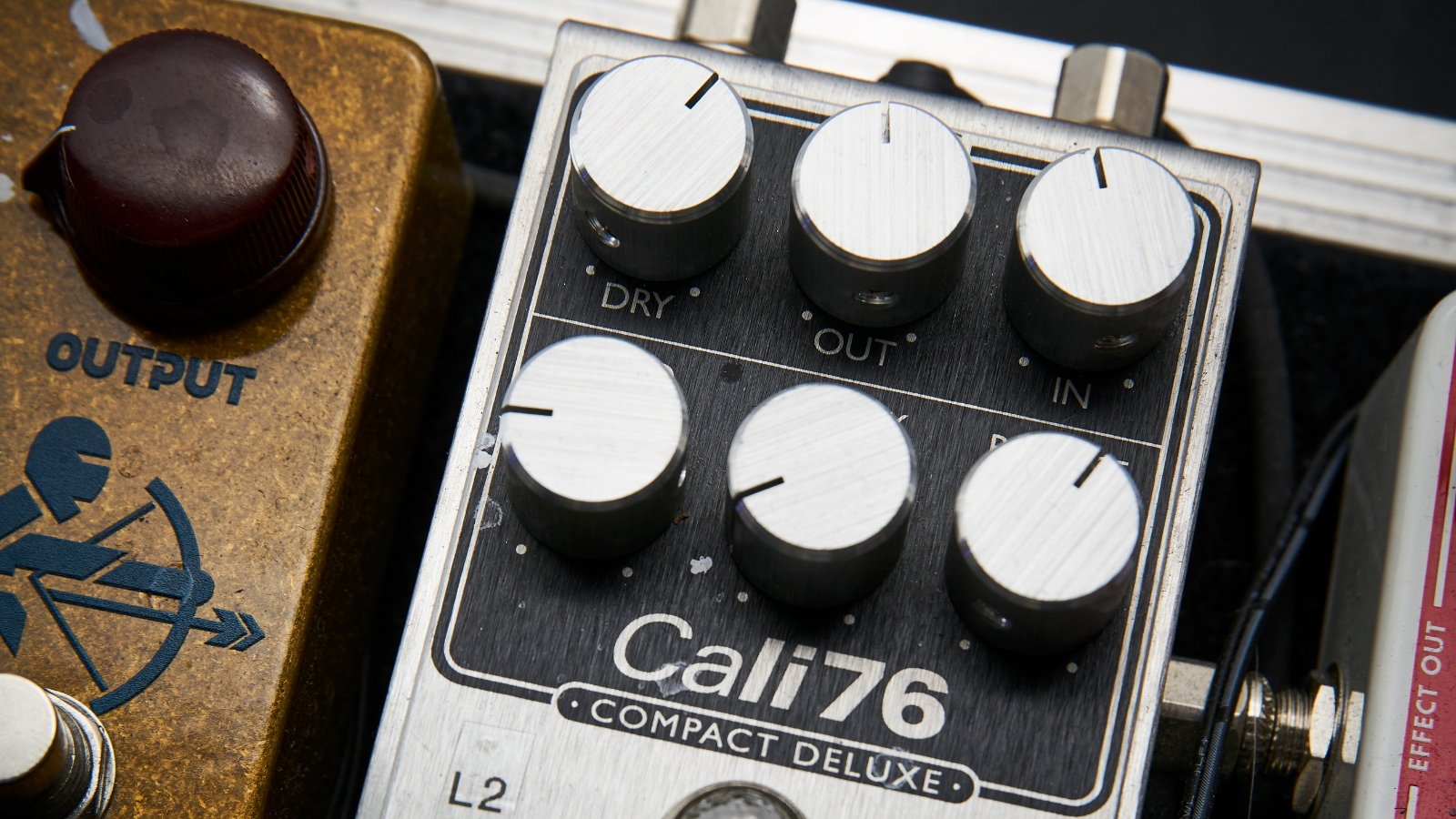
Compression is a dense topic and to be totally honest, quite difficult to get your head around. I’ve been engineering in analog studios for the past couple of years using outboard compressors, so I know my way around the controls and the various types of compressors on offer.
To help you get your head in the game and decide which compressor is best for you, I’ve outlined the compressor types that are available in the form of guitar pedals. Developing this understanding will help you know how they affect your tone and what styles you can play with them.
Optical compressors
You can trust Guitar World
Optical compressors use a light source and a light-sensitive photo resistor to do their gain reduction. The more input you feed it, the brighter the light gets, which triggers the resistor to do its gain reduction dependent on the settings used.
This method makes them respond in a natural way, so optical compressors are often dubbed as ‘musical’ or ‘smooth’ in terms of their sound. They’re less likely to offer that ‘squishy’, overly compressed sound, and can add a subtle warmth to your tone.
Optical compressors are often used for clean tones, offering a subtle, transparent compression that makes them great for country and blues, or any style where you need a solid clean tone.
VCA (Voltage Controlled Amplifier) compressors
VCA compressors use a voltage-controlled circuit to do their gain reduction. The VCA is a component in the pedal that reacts to the input, changing its amplification in order to reduce the dynamic range of the signal.
This makes VCA compressors very accurate and well-suited to fast attack compression. They tend to be very clean-sounding without any additional coloration, making them great for highly controlled compression that doesn’t change your core tone.
VCA compressors are used for styles that require a lot of dynamic control, like funk and pop. They’re great for controlling rhythm guitar chords, but you can easily overdo it with this type of compressor, resulting in a dull and lifeless guitar tone.
FET (Field Effect Transistor) compressors
A FET compressor is designed to imitate the action of a tube compressor in the studio. As well as a fast attack like a VCA compressor, a lot of FET compressors offer additional harmonic distortion.
FET compressors are the opposite of transparent and often add extra grit and saturation to your tone. They can enhance your pick attack and make your guitar tone more energetic with a snappy response.
FET compressors are really good for harder styles like rock and metal and sound great on lead guitar licks. They can tighten up rhythm guitars and make for a more dynamic performance than other compressor types.
Multiband compressors
Multiband compressors are another example of something from the studio realm that’s made its way over to guitar pedals. Multiband compressors allow you to select a range of the frequency response to compress, giving you a lot of control over how you compress your tone.
This means you can use a multiband compressor to control an overly boomy low end, or help tame the harshness in the high end without having a dulling effect on your tone, you might get from EQ. They take a bit of knowledge to get them to work right, so they are better suited to players with more experience.
If you’re playing an extended-range guitar like a 7 or 8-string, then a multiband compressor could really help you tighten up the low end. They’re great for those who play in ambient or more experimental styles, as they offer a lot more control than other compressor types.
Studio-style compressors
A newer entry into the world of compressor pedals, studio-style compressors emulate classic studio outboard gear using digital signal processing (DSP). Studio compressors often feature more advanced features than your average pedal, and a lot of studio-style compressors emulate their workflow.
A studio-style compressor can vary a lot in terms of its effect on your tone, so it's wise to research the unit it’s based on before you buy. Some will be ultra-transparent, others will add a definitive color to your guitar tone.
If you’re recording a lot, then a studio-style compressor is a great choice. They offer a lot of control and enable you to really get into the nitty-gritty of tweaking the overall sound of your rig.
Key terms
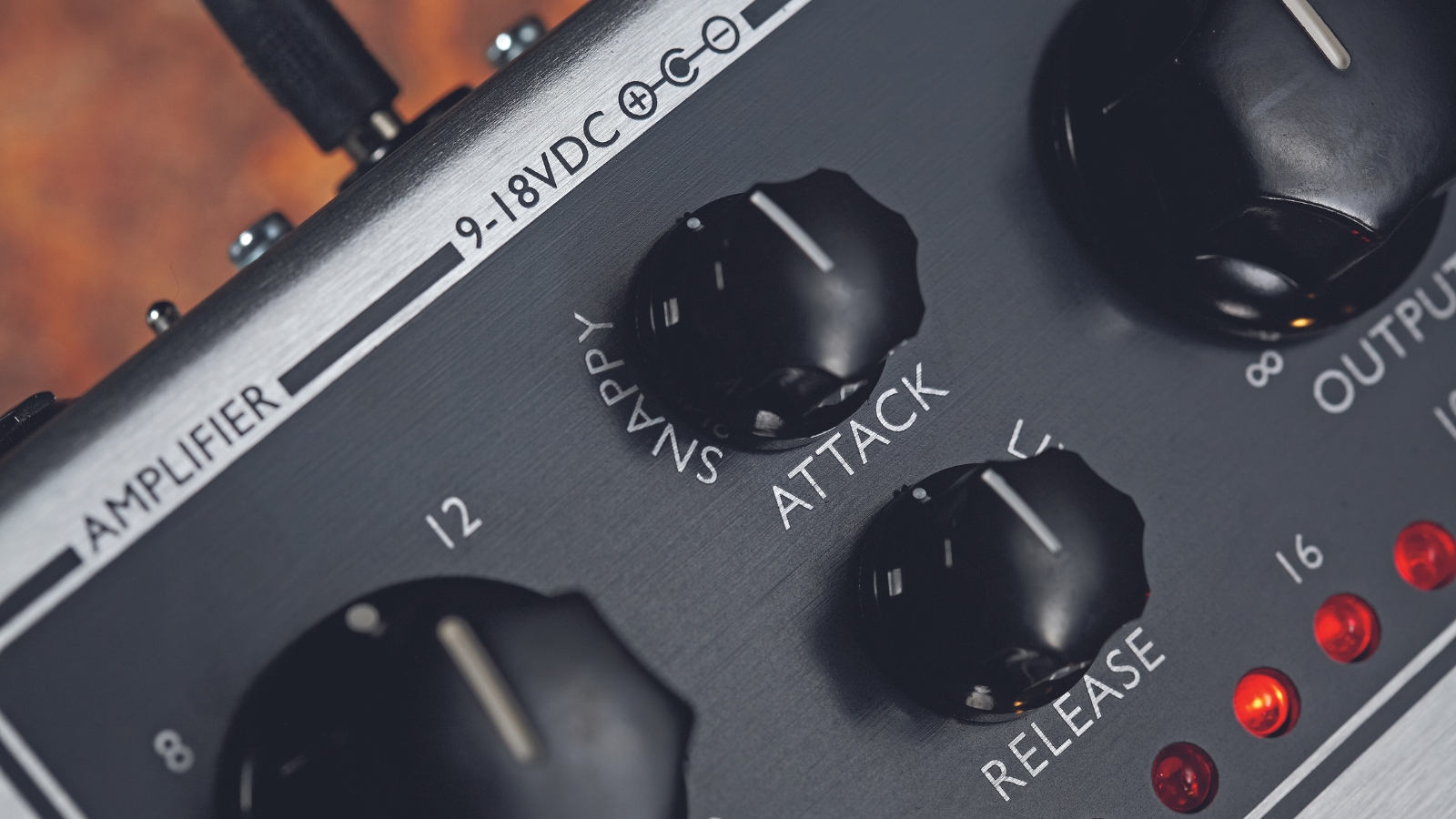
If you're confused by the language used around compressors, my guide to all the key terms will help you get your head around it. These consist of proper terminology to describe compressor controls, as well as the more colloquial terms musicians use to describe the effects of compression.
- Attack - How quickly the compressor kicks in after your signal exceeds the threshold. A quick attack controls transients, whereas a slow attack preserves your picking dynamic.
- Blend - A setting on a compressor pedal that lets you combine your compressed and uncompressed signals. Used to retain more dynamics in your tone.
- Color - Refers to a tonal change imparted by certain compressor pedals. This can be extra warmth in terms of EQ or more grit in terms of saturation.
- Gain (Makeup Gain) - Adds gain at the end of the chain to ensure your outgoing signal is the same level as the incoming one.
- Glue - A way to describe the cohesive feel of compression, where a sound feels more pulled together.
- Knee - The curve of how compression is applied once the signal has exceeded the threshold. A soft knee gives a more gentle response, whereas a hard knee reacts instantly.
- Musical - A way to describe the sound of a compressor, usually referring to a more natural and flattering type of compression.
- Pumping - When heavy compression settings are used, resulting in an audible volume increase and decrease. Usually undesirable, but can be used for effect.
- Punchy - A clear and tight style of compression that accentuates the transients.
- Ratio - How much compression is applied once the signal exceeds the threshold. A higher ratio will squash your signal more aggressively.
- Release - The setting that controls how long the compressor reduces the volume once your original signal has dropped below the threshold.
- Snappy - Describes a responsive, crisp compression sound that enhances your pick attack.
- Squash - A way to describe heavy compression that ‘flattens’ your playing dynamics entirely.
- Squishy - Another descriptive term for a compression effect that softens your tone noticeably, used by a lot of funk and country players.
- Sustain - Increases the length of the notes you play, enabling you to hold notes for longer.
- Threshold - The level at which the compressor starts working. Anything below the threshold is unaffected.
- Transparent - Describes a compressor that doesn’t affect your overall tone.
FAQs
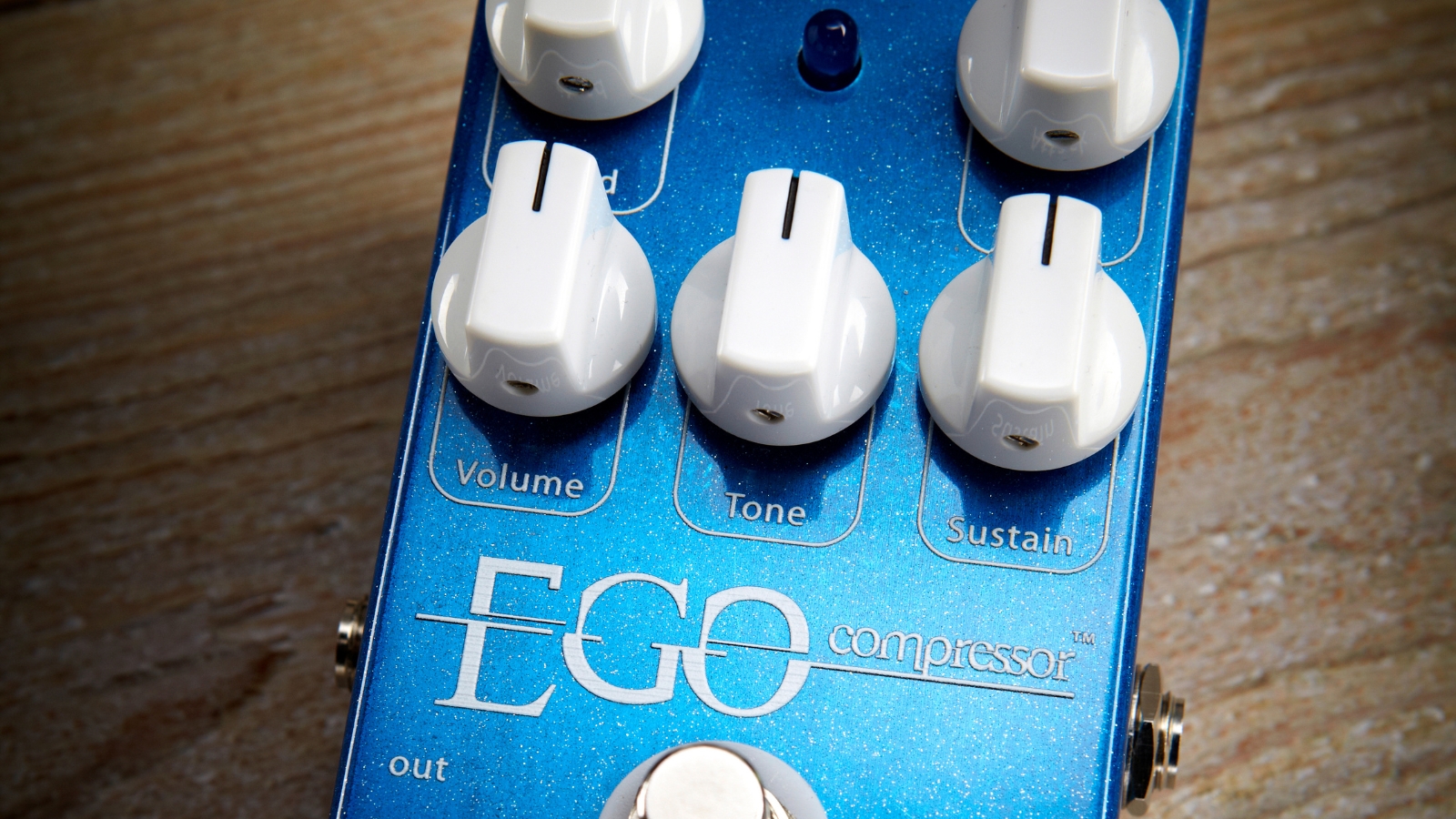
What does a compressor pedal do?
Put simply, a compressor pedal evens out your playing dynamics. This means you get a more consistent performance when you play, as each note will be closer in volume. Compressors can also affect your overall guitar tone, by adding EQ or saturation.
Do I need a compressor pedal?
It all depends on your playstyle, genre, and current equipment in your rig. If you play a lot with heavy distortion, then your signal is already compressed a lot. Similarly, if you have a lot of dynamic range in your playing, then a compressor might actually have a negative impact. If you play a lot of clean sounds, then a compressor can have a beneficial effect.
Should compressor pedals go first or last?
It all depends on what effect you want your compressor to have. Compressors tend to be placed at the very front of the chain, sometimes even before the tuner pedal. This is so they can have the best effect on the dynamics of your playing, which gives the rest of your pedals a nice, steady signal to work with.
Some players prefer to put a compressor after the drive section, which can enhance sustain and add that finishing touch to the tone. This also keeps the interaction between your guitar and dirt pedals, which can be useful if you’re using an amp-style overdrive or distortion pedal.
Are all compressor pedals noisy?
Unfortunately, some noise is to be expected with any compressor. This is because a compressor evens out your signal, which means lifting the quieter parts, including the noise floor. Some compressor pedals deal with this better than others, but you should expect a bit of noise with pretty much any compressor, setting-dependent.
When shouldn’t I use a compressor pedal?
If you like a lot of dynamic range in your playing, then a compressor pedal probably isn’t for you. A compressor evens out dynamics, so there won’t be as much difference between your quiet and loud parts. Similarly, if you use a lot of distortion already, your signal is already pretty compressed, so you might not find that you get much out of using a compressor pedal.
How we test

At Guitar World, our writing team consists of seasoned musicians deeply immersed in the world of guitar gear. With years of playing and rigorous product testing under our belts, we bring a practical understanding derived from real-world experience with musical equipment. Our dedication covers every aspect of the musical journey, from live gigs to studio sessions, forming the foundation for our carefully curated recommendations across various categories.
When it comes to finding the best compressor pedals in the market, our approach is meticulous. We blend practical experience, insights from user reviews, and extensive discussions within our editorial team. This down-to-earth method ensures a thorough evaluation, offering a reliable guide for your next pedal purchase.
As passionate guitarists ourselves, our main aim is to help fellow players discover gear that perfectly fits their needs. We consider factors like budget constraints, features, and the pedal's usability, creating a list that straightforwardly represents the best compressor pedals in today's musical landscape.
Read more about how how we test products and services and how we make our recommendations.
Related buyer's guides
- Express yourself with the best wah pedals
- Get all wobbly with the best tremolo pedals
- Check out the best Tube Screamer clones
- The best boost pedals for every budget
- Clean up your signal with the best noise gate pedals
- 8 best multi-effects pedals for guitarists
- Inject dirt into your tone with the best fuzz pedals
All the latest guitar news, interviews, lessons, reviews, deals and more, direct to your inbox!
Jonathan Horsley has been writing about guitars since 2005, playing them since 1990, and regularly contributes to publications including Guitar World, MusicRadar and Total Guitar. He uses Jazz III nylon picks, 10s during the week, 9s at the weekend, and shamefully still struggles with rhythm figure one of Van Halen’s Panama.
- Alex Lynham
- Matt McCrackenJunior Deals Writer
